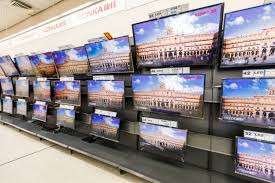
The retail demand for higher LCD TV panel was weighed down in the third quarter of current year due to the impact of higher prices that were noted at the start of 2017. The segment noted slower retail price erosion especially in the markets of China and North America which are the very price sensitive in the entire global market.
However, Europe and most of the emerging market in particular and other markets in general, exhibited signs of growth in demand forte sector.
“Demand in China has been negatively impacted by much slower retail pricing erosion for TVs, and fewer promotions as brands seek to protect profit margins,” according to the latest findings from TV Sets Intelligence Service by IHS Markit.
The report stated that while there was increase in revenues of 1 percent, there has been a decline of TV shipments of 5 percent, year-on-year, globally and touched 54.8 million units in Q3 2017. However, the report also noted the enhanced average selling prices of 6 percent because of growth in the average size of the panels and improvement in 4K mix
“Demand in China has been negatively impacted by much slower retail pricing erosion for TVs, and fewer promotions as brands seek to protect profit margins.” said Paul Gagnon, executive director of TV sets research at IHS Markit. “Likewise, the high price sensitivity and minor price erosion in North America led to a 10 percent decline in year-over-year shipments in Q3 ahead of the important Black Friday holiday shopping season. We expect that the more conservative promotions on Black Friday for TVs will diminish the potential volume growth this year in the US.”
IHS Markit analysis shows further shows that at the point of purchase and when deciding on the screen size to trade up to, consumer purchasing decisions were impacted by the slower price erosion which in turn slowed down the average size growth. When considering the combined value with the much reduced price erosion, revenues for T increased year-over-year for the first time in three years, and the average size of a TV shipped in Q3 2017 increased 1.7 percent to 42.1 inches. The 4K mix sets accounted for 35 percent of all units which indicated that the positive revenue result was also driven by the growth of 4K.
IHS Markit says, more business overseas is being aggressively pursued by more business overseas because of the poor demand results in China when considering brands. Strong growth outside of China saw Hisense and TCL both significantly increasing their market share globally. Globally, on the basis of a unit and revenue sharing, Samsung and LG Electronics are still at the top for TV brands. However, TCl and Hisense have managed to increase their market share to the highest ever for them in terms of T shipment which helped the companies to rise to numbers three and four respectively. In terms of revenue share, Sony grew its share to be at number three which saw the Japanese company reaching its highest level since 2011 driven by growing premium TV sales, including OLED TV even as Samsung and LGE continued to led the market on a revenue basis.
(Source:www.businesswire.com)
However, Europe and most of the emerging market in particular and other markets in general, exhibited signs of growth in demand forte sector.
“Demand in China has been negatively impacted by much slower retail pricing erosion for TVs, and fewer promotions as brands seek to protect profit margins,” according to the latest findings from TV Sets Intelligence Service by IHS Markit.
The report stated that while there was increase in revenues of 1 percent, there has been a decline of TV shipments of 5 percent, year-on-year, globally and touched 54.8 million units in Q3 2017. However, the report also noted the enhanced average selling prices of 6 percent because of growth in the average size of the panels and improvement in 4K mix
“Demand in China has been negatively impacted by much slower retail pricing erosion for TVs, and fewer promotions as brands seek to protect profit margins.” said Paul Gagnon, executive director of TV sets research at IHS Markit. “Likewise, the high price sensitivity and minor price erosion in North America led to a 10 percent decline in year-over-year shipments in Q3 ahead of the important Black Friday holiday shopping season. We expect that the more conservative promotions on Black Friday for TVs will diminish the potential volume growth this year in the US.”
IHS Markit analysis shows further shows that at the point of purchase and when deciding on the screen size to trade up to, consumer purchasing decisions were impacted by the slower price erosion which in turn slowed down the average size growth. When considering the combined value with the much reduced price erosion, revenues for T increased year-over-year for the first time in three years, and the average size of a TV shipped in Q3 2017 increased 1.7 percent to 42.1 inches. The 4K mix sets accounted for 35 percent of all units which indicated that the positive revenue result was also driven by the growth of 4K.
IHS Markit says, more business overseas is being aggressively pursued by more business overseas because of the poor demand results in China when considering brands. Strong growth outside of China saw Hisense and TCL both significantly increasing their market share globally. Globally, on the basis of a unit and revenue sharing, Samsung and LG Electronics are still at the top for TV brands. However, TCl and Hisense have managed to increase their market share to the highest ever for them in terms of T shipment which helped the companies to rise to numbers three and four respectively. In terms of revenue share, Sony grew its share to be at number three which saw the Japanese company reaching its highest level since 2011 driven by growing premium TV sales, including OLED TV even as Samsung and LGE continued to led the market on a revenue basis.
(Source:www.businesswire.com)














